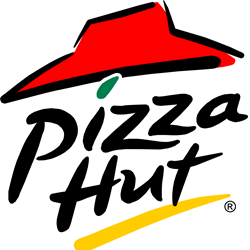Restaurant And Hospitality News – May 2, 2016

By Christine Kern, contributing writer

In news this week, Pizza Hut is the first national chain to give customers an estimated time of delivery before ordering; new research shows that delivery outside pizza is growing quickly; and a Cornell study demonstrates the impact of Revinate surveys on hotel occupancy and revenue rates.
Pizza Hut Launches “Promised Time” For Delivery
Pizza Hut has launched a new service that provides customers with an estimated wait time before placing an order. The new ‘Visible Promise Time” feature allows users to see an estimated timeline of when their food will be ready, prior to actually placing the order, making it the only national pizza chain to do so. The visible promise time is available for both carryout and delivery. Pizza Hut has been beta-testing the feature for several months, and is now rolling the digital feature out to restaurants across the country.
“Pizza Hut is providing hungry customers with the convenience of knowing an estimated time it could take for their order to be available before the order is actually placed,” explained Baron Concors, Chief Digital Officer, Pizza Hut. “We want to be on our customers’ timetable, not our own. That’s why we feel it’s important to be transparent with our customers upfront and in the end, it’s about making it easy for our customers to enjoy our high-quality food in the best possible way.”
In an interview with the Nation’s Restaurant News, Concors explained, “We’re looking at all angles of our business to figure out how we can bring that transparency and authenticity of our brand to the consumers, and this is one of the best ways we’ve found.” Consumers today leverage new technology and are accustomed to “getting what they want when they want it,” Concors explained. “In that spirit, we said, ‘Let’s just tell them before they order how long it will take.’”
To date, customer reaction so far has been “overwhelmingly positive,” according to Concors. “I personally read through the comments that come through every day in our customer-service channels, and people really appreciate knowing that information up front.”
Concors likened it to buying a plane ticket. “Would you ever buy a plane ticket if you didn’t know when it took off and landed until after you bought it?” he asked. “No one would ever do that. Why should pizza be any different?”
New Research Shows Delivery Outside Pizza Is Up 33 Percent and Growing
According to the latest NPD research, deliver traffic outside of pizza is up 33 percent in 2015 over 2012, while pizza delivery has actually declined by 3 percent. Generation Z, Millennials, and Older boomers are behind the growing delivery trend, as they order more meals delivered to their homes out of a desire for restaurant-quality meals; time constraints; or because they are working from home. Some also want to spend more time with family or are trying to participate in at-home leisure activities.
“Consumers want to have the eat-out experience, but are saving money by eating in,” explained NPD analyst Bonnie Riggs. “All they had was pizza and Asian. [Now] they have other options available.”
Data showed that the sandwich category grew its share of delivery traffic to 10 percent, while burger joints increased to 3 percent, and all others doubled its share to 4 percent during the same period. Fast casual also increased its share to 3 percent, while Asian delivery traffic remained at 5 percent and pizza delivery declined to 64 percent.
“The growth is an indicator that there’s a broad opportunity for delivery,” said Riggs.
Cornell Finds Revinate Surveys Deliver Increased Occupancy and Further Revenue Potential
A recent Cornell School of Administration study has found that Revinate, the software as a service (SaaS) company that helps hotels reinvent the guest experience, delivers impressive TripAdvisor results, including increased occupancy and further revenue potential. The study compared the average performance of 80 hotels across five global hotel brands for 12 months prior to and following the launch of Revinate surveys.
The study, “Hotel Performance Impact of Socially Engaging With Consumers,” measured the value of user reviews and social media performance for boosting hotel revenue and customer engagement. This report examined the effects of reviews posted on TripAdvisor to look at non-operational and relatively inexpensive ways in which hoteliers can improve their performance, both on the review sites themselves and in terms of actual hotel revenue and sales performance.
“User reviews have become a critical aspect of the travel research process, as evidenced by TripAdvisor having over 350 million unique monthly visitors,” explained Chris Anders, associate professor at the Cornell School of Hotel Administration. “In this report, we show via a simple series of before-and-after tests with Revinate that the encouragement of reviews via post-stay surveys not only increases the number of reviews posted on TripAdvisor, but also the hotel’s actual review scores (relative to their competitive sets.)”
The study found that when using the Revinate surveys, hotels saw the following results:
- 58 percent of properties increased their popularity ranking on TripAdvisor, and another 14 percent maintained their current ranking.
- 54 percent of the properties who did not increase their ranking still saw their rating scores increase relative to their competitive set.
- Properties experience an overall 3x average increase in review volume.
- Average rating scores increased by 2 percent.
- Properties saw a 3 percent average increase in positive reviews.
- Hotels that lagged behind their competitors in number of reviews prior to launch saw more than double the average number of reviews of their competitive sets following the launch.
- Occupancy also increased by 1 percent.
